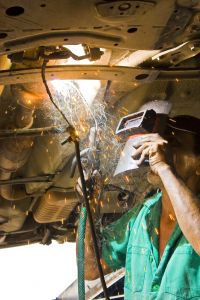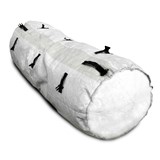Diamond and gemstone mining tops the IBISWorld list for 2012 of the industries set to soar even though over 90 per cent of Australia's diamond production is exported, and the industry is highly dependent on global economic conditions.
After five consecutive years of decline due to lower production levels, lower global prices and a rising Australian dollar, Australia's diamond and gemstone mining industry is expected to rebound in 2012 – with industry revenue forecast to increase by 36.7 per cent to reach $599.9 million.
IBISWorld General Manager (Australia), Karen Dobie said: "The revenue rebound will be driven by stabilising prices and higher production levels, which are forecast to increase by 39.5 per cent."
Motor Vehicle Manufacturing
Motor vehicle manufacturing will grow by 14.3 per cent to reach over $11.9 billion in the coming year as the industry continues to recover the global financial crisis.
"However, revenue is still expected to fall $5 billion shy of pre-financial crisis levels," Dobie said.
The provision of a more diverse range of products and more environmentally friendly vehicles will be key factors assisting domestic growth.
The value of exported vehicles is forecast to return to growth for the first time since 2009. This will be paramount to the growth of the industry, as the domestic market will struggle to support multiple large car manufacturers.
Biotechnology
With many players in Australia's biotechnology industry approaching commercial readiness and receiving increased global investment, IBISWorld expects revenue to grow by 10.3 per cent over the coming year to reach over $2.4 billion.
"While most biotechnology firms are currently not profitable due to their research and development intensity, continuing economic uncertainty will drive growth as leading global investors search for low-risk opportunities like commercial-ready technology that Australia has on offer," Dobie said.
On the other side of the ledger, top of the list of industries expected to go backwards in 2012 is iron and steel manufacturing.
Weaker global economic conditions and a strong Australian dollar will see exports of iron and steel decline by more than 45 per cent over the coming year. IBISWorld expects revenue for iron and steel manufacturers to fall by 14.9 per cent in 2012.
"Domestic demand is simply not strong enough to compensate for the rapid declines in international exports – leading industry players to reduce production levels," Dobie said.
"BlueScope's decision to exit the export market and the closure of two blast furnaces at its Port Kemble steelworks facility is indicative of the challenges facing the industry."
The introduction of the carbon tax in 2012 will provide a motive for many producers to move some or all of their manufacturing offshore to avoid higher tax rates, resulting in lower production and revenue – despite the protection of government assistance packages, which will shield industry participants from the full effects of the carbon tax for the first two to three years.
Institutional Building Construction
The institutional building construction industry mainly constructs buildings where Australians learn, work, heal, socialise, exercise, pray and seek justice. Industry revenue is expected to decline as governments cut spending on new construction and major projects come to completion.
The end of stimulus spending on the refurbishment of primary schools will also pull revenue lower. In 2012, industry revenue is expected to fall by 9 per cent to reach $10.3 billion.
"The majority of work in the institutional building market is undertaken by private contractors and funded by the public sector. When funding falls away, so too does revenue," Dobie said.
Cotton Ginning
Australia's cotton ginning industry is expected to return to more standard production levels in 2012, following an extraordinary year in 2011. IBISWorld forecasts this will result in a 7.7 per cent decline in industry revenue.
"While the wet weather in 2011 played havoc with most agricultural industries, it was just what the cotton industry needed – with lint production reaching 1,144 kilotonnes and revenue reaching $2.7 billion," Dobie said.
"Although down on last year, 2012 will still be a good year overall for cotton ginners, with production expected to reach 1,109.5 kilotonnes, and industry revenue forecast to be $2.5 billion."
Pulp, Paper and Paperboard Manufacturing
Australian pulp, paper and paperboard manufacturers will struggle to remain relevant as more Australians trade-in printed books and other documents for iPads and e-readers, affecting demand for industry products. IBISWorld forecasts industry revenue will fall 3.7 per cent over the coming year.
Australian paper producers have been battling for some time now against foreign producers that have significant cost advantages.
"The price of woodchips is expected to continue to remain high in 2012 – resulting in continuing high prices for printed materials. This will be an additional reason for consumers to go electronic," Dobie said.
Delays in the development of a number of key production sites such as the Gunns mill in Bell Bay, Tasmania and the Protavia mill in Penola, South Australia have also dented industry productivity.







